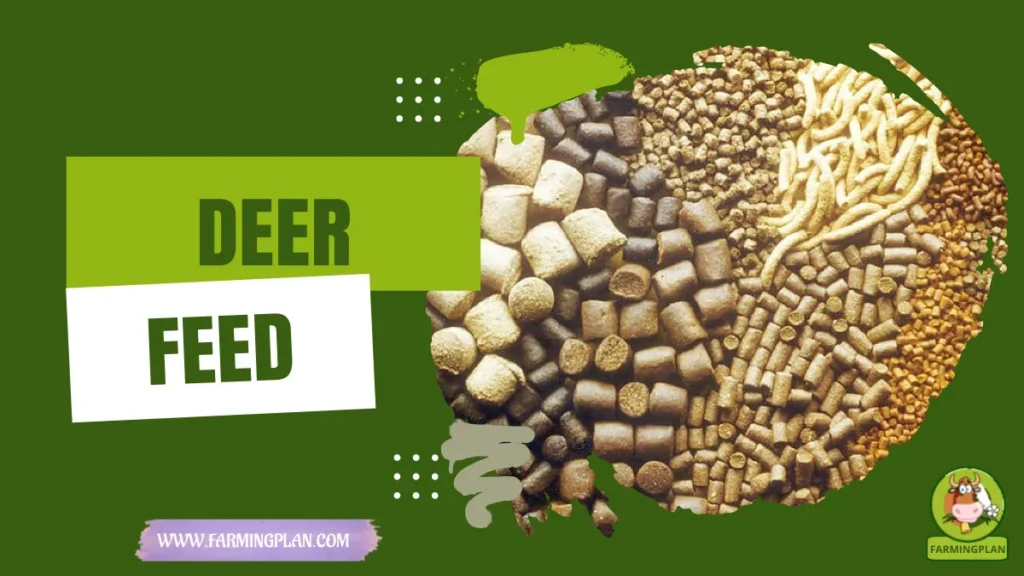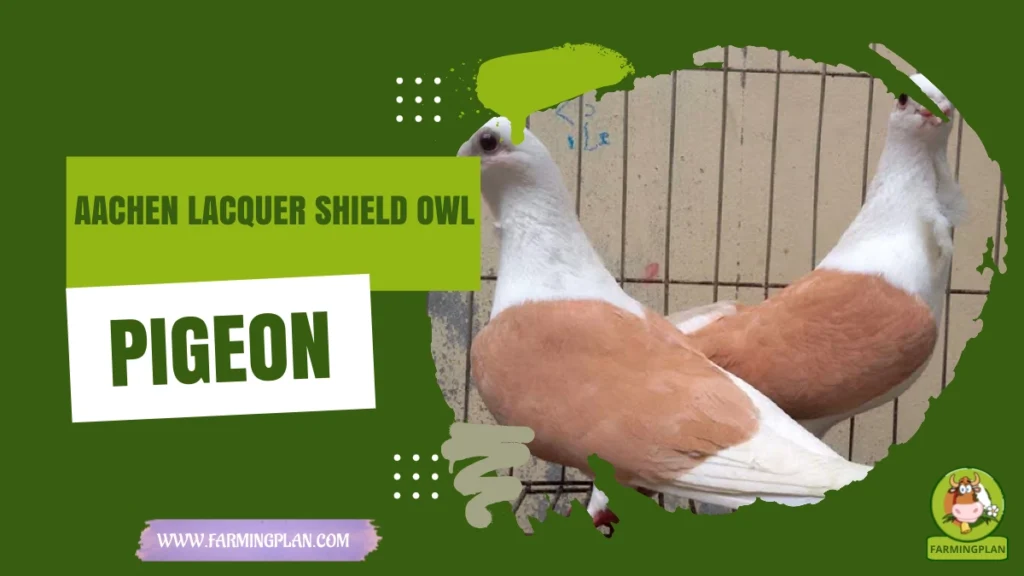When I first came across the Zerdava Dog, I was instantly drawn to its sharp eyes and fox-like stance. It’s not just a beautiful breed it’s deeply loyal, incredibly smart, and full of energy. Originating from Turkey’s Black Sea region, this dog is officially recognized as a native treasure and continues to earn its place in the hearts of hunters, farmers, and dog lovers alike. With its inward-curved tail and athletic body, it stands out in both form and function. In this article, I’ll walk you through everything I’ve learned about the Zerdava its traits, temperament, feeding tips, care routine, and why this hidden gem deserves way more attention.
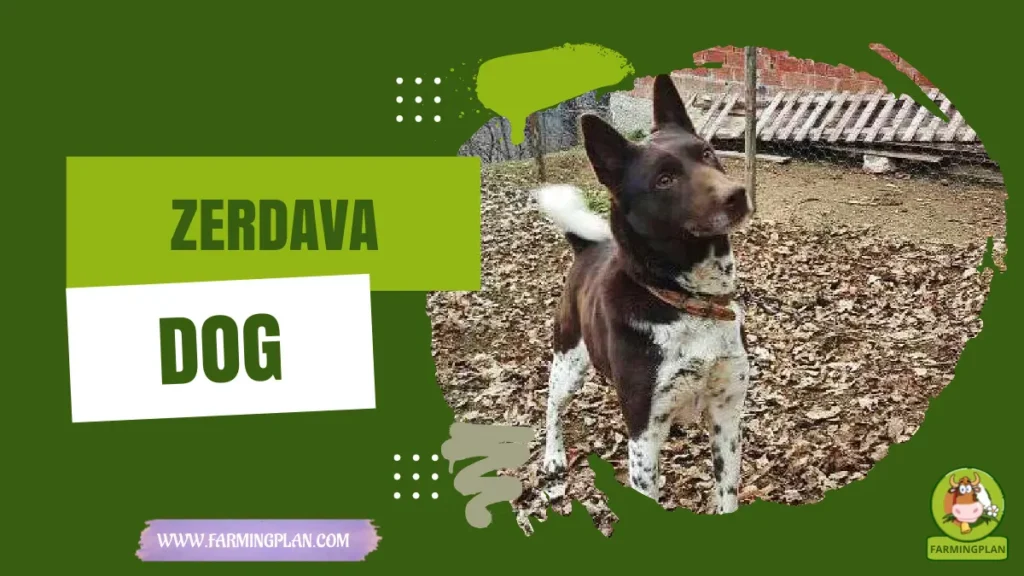
History & Origin: How the Zerdava Dog Traced Its Path
The story of the Zerdava Dog goes way back to the rural corners of Turkey’s Black Sea region. If you’re familiar with this area, you’ll know it’s filled with thick forests, steep hills, and isolated farms. That’s exactly where the Zerdava made its name guarding homes, herding animals, and helping hunters track game.
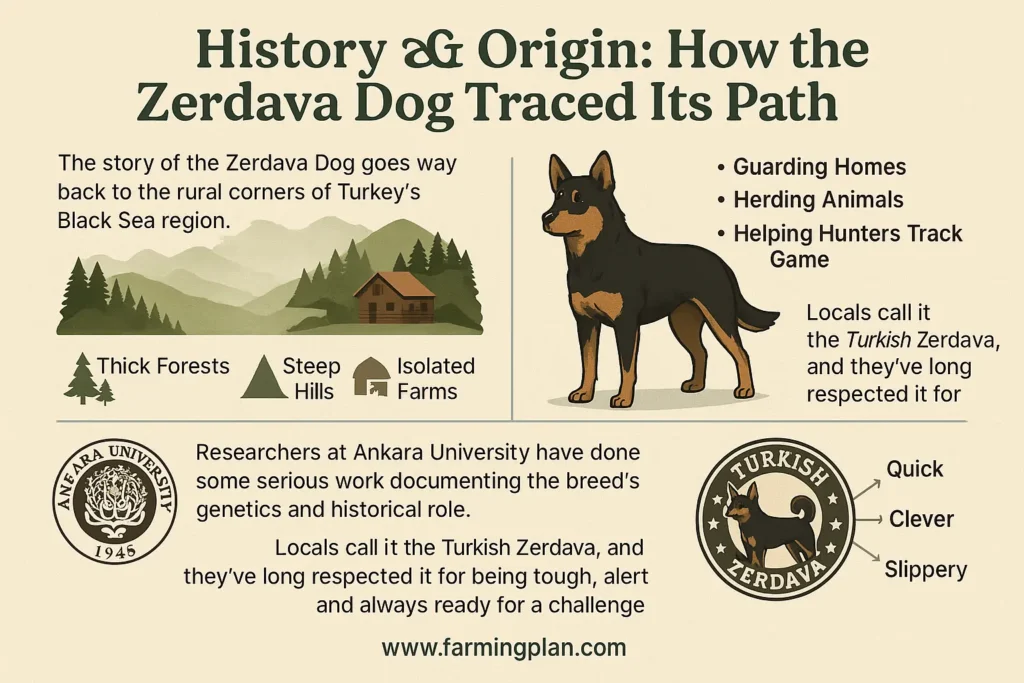
Researchers at Ankara University have done some serious work documenting the breed’s genetics and historical role. It’s fascinating how this dog has held its own without much outside influence, making it one of Turkey’s few official dog breeds. Locals call it The Turkish Zerdava, and they’ve long respected it for being tough, alert, and always ready for a challenge.
The breed’s name actually comes from the Georgian word for “mustelid” which fits, because the Zerdava is quick, clever, and slippery when it needs to be.
Characteristics: The Strong Build of the Zerdava Dog
Now, let’s talk about the Zerdava’s body and coat—because this dog is a head-turner. It’s got an athletic body, compact and agile, with a chest that’s deep but not bulky. You can tell it’s built for action. One of the breed’s most striking features is its inward-curved tail, which curls like a comma over its back.
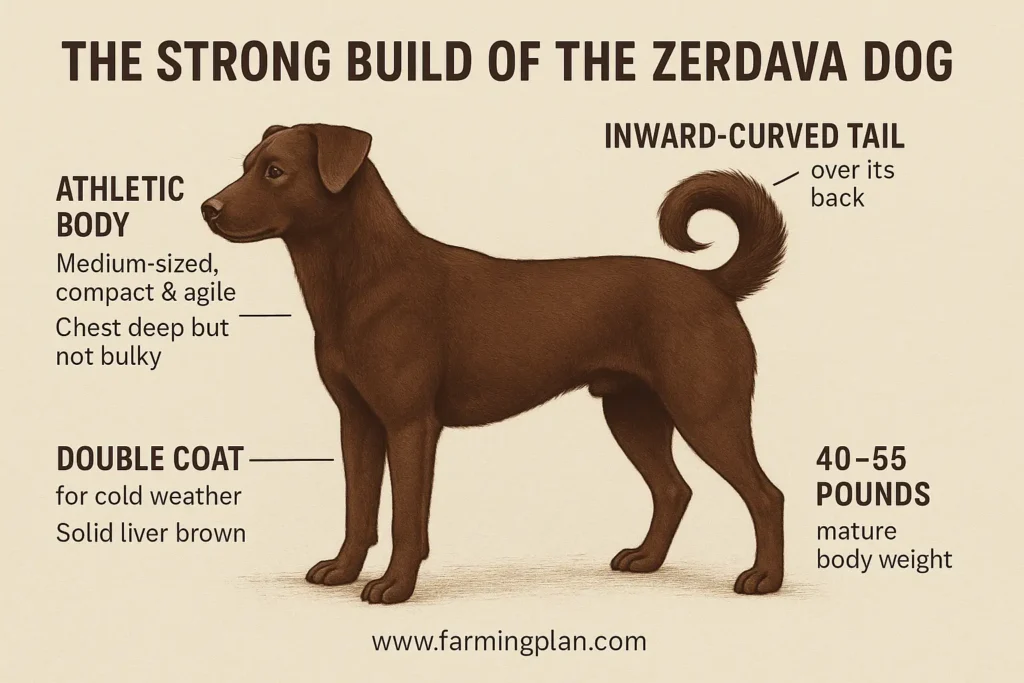
Its coat is another standout. The Zerdava sports a double coat, meaning it’s equipped for cold weather and outdoor life. You’ll often see them in shades of solid liver, liver roan, or even solid liver brown—a rich, earthy look that blends beautifully with the natural environment.
They come in medium body sizes, but don’t let that fool you—they pack serious strength and speed. Their mature body weight usually ranges between 40 and 55 pounds, making them ideal for active owners who like dogs that can keep up.
Read More: Alopekis Dog: Perfect Friendly Companion
Nature & Temperament: What Is the Zerdava Dog Really Like?
If I had to describe the Zerdava’s personality in three words, I’d go with alert, loyal, and driven. This dog has a no-nonsense attitude when it comes to guarding its family or property. At the same time, it’s loving and affectionate once you earn its trust.
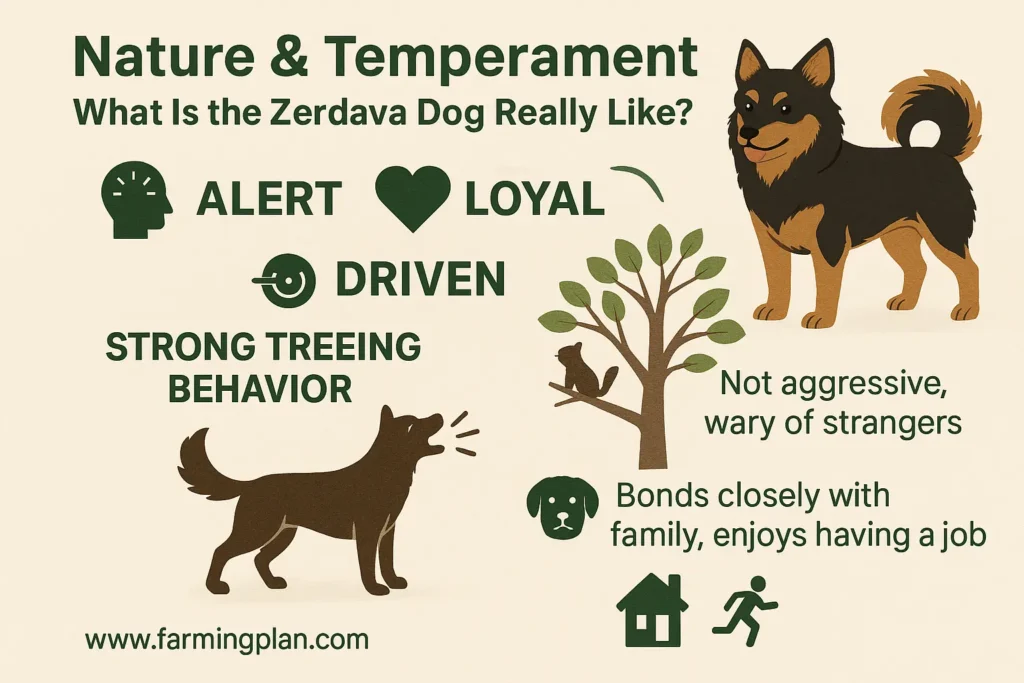
Zerdavas are known for their strong treeing behavior which means they’re excellent at chasing small animals and literally barking them up a tree. It’s a handy skill for hunters but also something you’ll want to train around if you have smaller pets.
They’re not aggressive, but they don’t warm up to strangers right away. If you’re a pet owner looking for a watchdog that bonds deeply with its family, this breed’s for you. They’re happiest when they’ve got a job to do, whether it’s guarding the house, running agility courses, or just being your jogging buddy.
Food & Diet: Feeding the Zerdava the Right Way
Keeping your Zerdava healthy starts with the right fuel. Because of their athletic body, they need a protein-rich diet—think lean meats like chicken, lamb, or turkey. Add in some complex carbs like brown rice or sweet potatoes, and you’ve got a solid meal base.
Puppies need more calories than adults because they’re growing into their mature body weight. I like to feed mine three smaller meals a day while they’re still young, then move to two meals once they hit adulthood.
Avoid highly processed foods, and steer clear of ingredients like corn and soy, which can mess with their digestion. And don’t forget fresh water! I keep a clean bowl available at all times, especially during summer when they burn energy fast.
Read More: Cocker Spaniel: Perfect Family Companion Dog
Usage & Purpose: More Than Just a Pretty Coat
Zerdavas have never been lap dogs. They were bred with purpose and still thrive when they have work to do. Traditionally, they were hunting companions—especially skilled at treeing behavior and tracking scents through the woods.
These days, many farmers still rely on them to protect livestock and guard rural properties. They’re also popping up in agility sports, scent detection roles, and even as loyal family pets.
Since they’re part of Turkey’s effort to preserve native dog breeds, raising a Zerdava is also a way of keeping tradition alive. It’s not just about having a dog—it’s about connecting with centuries of rural heritage.
Special Features: What Makes Zerdava Dogs Stand Out
Every dog is unique, but the Zerdava has a few features that really make it one-of-a-kind. The most obvious is that inward-curved tail—it’s almost like a signature move. You don’t see that on many breeds.
Its characteristic coat colour varies, but it always has a thick, weather-resistant double coat that’s perfect for harsh winters. Whether it’s solid liver, liver roan, or a combination of liver shades, the Zerdava’s coat blends beautifully with forest and farm landscapes.
Another cool trait? Their ability to memorize primary routes and return home without help. It’s like they’ve got an internal GPS. That’s why they’ve been trusted for so long in remote mountain areas—because they can find their way back, no matter what.
Read More: Bernese Mountain Dog: Powerful Perfect Family Pets
Health Issues & Prevention: Keeping Your Zerdava Dog Happy
Overall, Zerdava Dog are pretty hardy. But like all breeds, they’ve got a few health quirks to watch out for. Hip dysplasia can pop up, especially if they’re not exercised properly or if they carry too much weight for their body size.
Their double coat makes them prone to skin irritation if not brushed regularly. I recommend weekly grooming to keep shedding under control and skin healthy. Also, check their ears—Zerdavas are active and love the outdoors, so dirt and debris can lead to ear infections if ignored.
Regular vet visits, up-to-date vaccines, and flea/tick prevention go a long way. I also keep a simple first aid kit around for cuts and scrapes, which these adventurous pups are bound to get.
“Always Give Zerdavas A Job To Do—These Dogs Thrive When They Feel Useful, Active, And Mentally Engaged!”
Pet Owner Care Guide: Raise a Healthy Zerdava Dog – Step by Step
Step 1: Set Up a Secure Outdoor Space
Zerdava Dog need room to roam. I suggest fencing a decent-sized yard or outdoor kennel space. They’re escape artists with high energy, so make sure there are no holes or weak spots. A secure space means they can explore without getting into trouble.
Step 2: Choose the Right Diet for Growth and Energy
Feed based on age, size, and activity. Puppies need frequent meals with high protein. Adult Zerdavas do great on two balanced meals per day. Avoid table scraps—this breed has a sensitive digestive system.
Step 3: Train Early to Manage Treeing Behavior
Start obedience training as early as 8 weeks. Focus on recall and impulse control. Since they love to chase, a strong “come” command can prevent problems later. Use treats, praise, and repetition—it really works.
Step 4: Groom Weekly to Maintain That Double Coat
Brush them once a week with a slicker or undercoat rake. It keeps their coat shiny and healthy while preventing matting. Pay extra attention during seasonal shedding—usually spring and fall.
Step 5: Schedule Regular Vet Visits and Keep Vaccines Updated
Zerdava Dog don’t show pain easily, so yearly check-ups are a must. Vaccinate on schedule, and don’t skip deworming or flea prevention. Ask your vet to monitor for hip or joint issues as they age.
Step 6: Exercise Daily—No Exceptions
This isn’t a couch potato breed. Long walks, running games, or agility training keep them mentally and physically sharp. Without enough exercise, they get bored—and bored Zerdavas get destructive.
Step 7: Keep Their Minds Busy with Toys and Challenges
They love puzzle toys, scent games, and anything that mimics work. Give them “jobs” around the house. Trust me, a mentally stimulated Zerdava is a well-behaved Zerdava.
FAQ
Is the Zerdava Dog good for first-time dog owners?
It can be, but you’ll need patience and consistency. They’re intelligent and trainable but need structure.
Does the Zerdava Dog bark a lot?
Yes, they’re vocal especially when guarding. Proper training helps manage unnecessary barking.
How much exercise does a Zerdava need?
At least 1–2 hours a day. They’re active and need both physical and mental stimulation.
Can Zerdava Dogs live with other pets?
They can, but early socialization is key. Their prey drive may kick in around smaller animals.
Are Zerdavas recognized internationally?
Not widely yet, but they are an official dog breed in Turkey and gaining recognition among breeders.
Conclusion
The Zerdava Dog is a hidden gem among working breeds—smart, strong, and endlessly loyal. It’s built for action with an athletic body, weather-proof double coat, and legendary treeing behavior. Whether you’re a pet owner, a breeder, or just someone who appreciates a good working dog, this breed brings centuries of history and heart right into your home. Raising a Zerdava isn’t just about having a dog—it’s about living with a partner that’s always ready for the next adventure.

